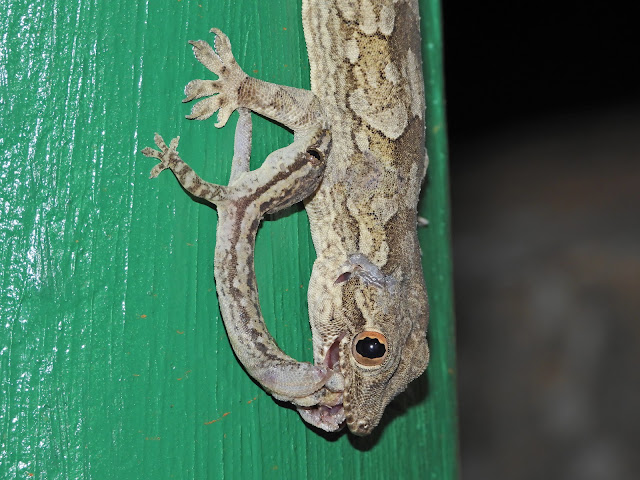Tale of a Tail
Tale of a Tail
Vinod M Kumar
One of my routine at ACCC after finishing dinner is to go for a short walk around the campus looking for reptiles and amphibians, an activity called Herping. It is a term used by both professionals and amateur herpetologists where a person goes in search of snakes, frogs, lizards etc. It’s been almost a month since the onset of the Southwest monsoon. Though there was no heavy rainfall, there was always occasional drizzle which keeps the night cool and the place moist. A weather ideal for the frogs and toads to search for food and mate which in turn lures the snakes out of their burrows looking for a nice meal. It was one such day when it drizzled all evening and the place was filled with cool, moist air reverberating with the loud croaking sounds of frogs. With excitement and expectation to photograph some herpetofauna, I started my night walk. As the saying goes “With expectation comes disappointment” it was a disappointing outing with no new sightings other than common and widespread residents like Schneider’s toad (Duttaphrynus scaber) & Indian Cricket frog (Minervarya agricola).
When I finished my walk and ascended the stairs of the community hall I noticed a common house gecko was busy preying on the insects which got attracted to the path lights. House gecko (Hemidactylus frenatus), as the name suggests, has a clear preference for urban environments, living in close association with humans. They also occupy a variety of habitats including trees, stones and are exclusively nocturnal. Frightened by the vibration caused by my footstep, it started running towards a crack, which is an ideal place to escape from potential danger. But the poor guy, unfortunately, ran straight into another large gecko, Leschenault’s leaf toed gecko (Hemidactylus leschenaultii) also known as Bark gecko. It is an opportunistic feeder and will feed on anything it can overpower. There has been records of it preying on other geckos, skink, a colubrid snake and even a lesser bandicoot rat! (Bandicoota bengalensis)
Within no time the bark gecko caught the house gecko by the body with a quick bite. With no firm grip, the bark gecko found it difficult to overpower the house gecko. House gecko rather put up a fight and managed to bite the right forelimb of the bark gecko real hard. The bite was very firm that the bark gecko couldn’t figure out how to go about swallowing the poor little guy headfirst. House gecko’s tail became reddish and was curling its tail. I thought it would detach its tail to confuse the bark gecko but it was smart and was waiting for the right time. Trying to manoeuvre from the body to the head, the bark gecko gradually lost its hold over the house gecko and now it was grabbing it just by the tail. When the house gecko realised that, it was smart enough to detach its tail from the body in no time and jumped off from the wall onto the ground. This self-amputation behaviour is very well observed in geckos called as Autotomy. This survival strategy helps it to elude a predator’s grasp or to distract the predator by detaching its tail and thereby allowing it to escape.
Having lost a good meal the bark gecko swallowed the tail which must have made up for a quick snack. At first, I thought what I witnessed was an instance of cannibalism, but later realised it was congeneric predation. It means when a species preys upon another species belonging to the same genus. Here both the species belongs to the genus Hemidactylus. All was not lost for the house gecko as it would regrow a functional tail over a period of weeks or months. But the regenerated tail, in colour and texture, will differ distinctly from its original appearance. In the struggle, the house gecko lost all the right toes and left hindlimb was fractured. Even with severely injured hindlimbs, it tried to climb up the wall but was not very successful at it.


Watchman thatha was with me the whole time, while I took photographs & videos, holding his flashlight and keeping a keen eye. While we were chatting about the spectacle which we just witnessed, he mentioned that he has previously observed a similar incident and saw a gecko swallowing another gecko as a whole. It might be an instance of either cannibalism or congeneric predation.
Not much is known about the ecology and natural history of many animals, especially reptiles and amphibians. As most of us are interested in seeing rare species or discovering new ones, very few are patient enough to invest time in observing the natural history that happens around us. If we all start paying attention towards these little things, it will go a long way in conservation of many lesser-known species.









Comments
Post a Comment